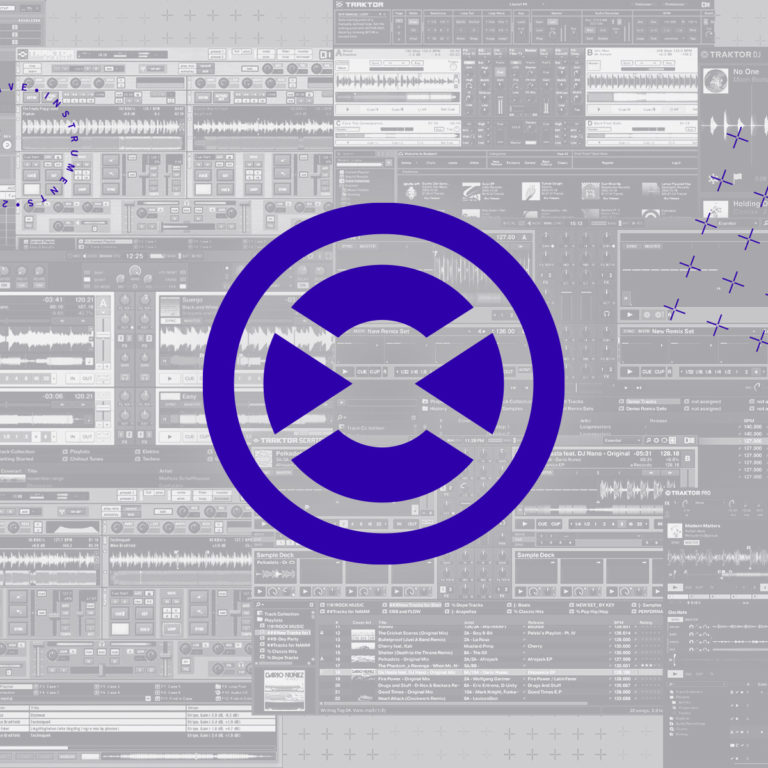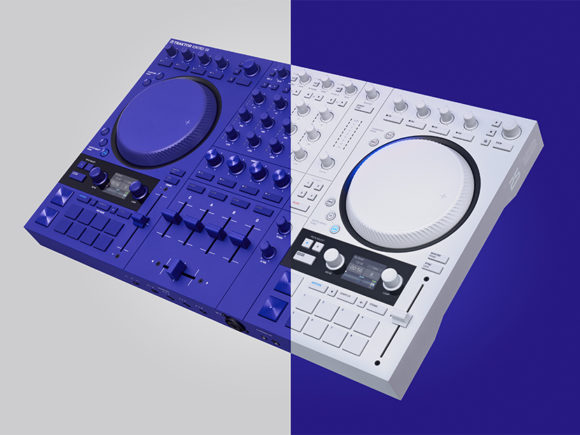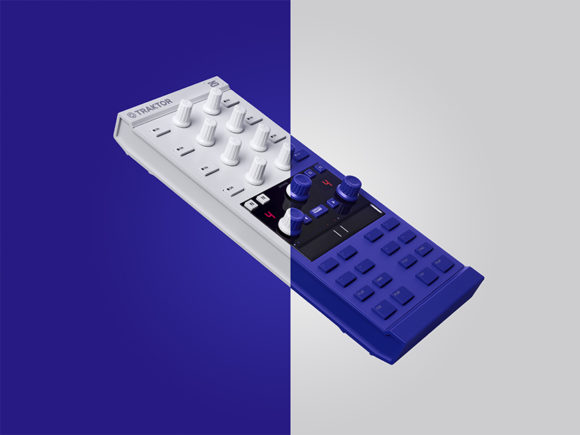It might be hard to imagine, but many aspects of DJing in 2021 simply didn’t exist 20 years ago. There are now countless ways to perform as a DJ, and many of them rely on features that arrived via Native Instruments’ TRAKTOR.
The most successful technologies typically progress to the point where they erase our memory of life before that particular convenience. Despite the fact that I was an adult before smart phones and social media apps existed, thinking back on life before them feels like remembering early childhood. Think about the last time you read a printed map, or opened a newspaper to find out listings for local club nights, for example. Similarly, when was the last time you tried to DJ without seeing a waveform preview of your track, sliding left-to-right across a screen that listed the name of the file? Have you ever looped the last few bars of a banger before it ran out? Can you remember a time when that was impossible?
Over the past two decades, TRAKTOR has been such a constant source of new tools that it’s easy to forget how much ground was broken by this stalwart app, and how it has shaped the state of the artform today. Here, we’ll take a look at a few of those tools, and gain insights from some of the designers and DJs who made them possible.

Seeing sounds
While digital visualizations of sonic waveforms have long been a staple of music production software, it wasn’t until TRAKTOR came along that they became the norm for DJ tools too. In fact, the familiar flow of a waveform preview showing a user upcoming changes in the music was one of the defining features of the platform’s first iteration.
Friedemann Becker is the Product Manager for Traktor, and has shepherded the software since its very beginning. “Native Instruments was a company that did software for music producers, and it had always interfaced with DAWs,” he says. “There was kind of an overlap between these people who were used to the studio waveforms and the DJ-minded people. I think it was almost expected that a Native Instruments DJ application would have something like a waveform. I think this is also one of the unique things that could only have come from Native Instruments.”
“The most interesting for DJs was to be able to preview how a song would evolve in the future – to see the drops, to see when the bass comes back in… and these were things that weren’t easy to see in traditional waveforms. So adding colors to show frequency as well as amplitude made a lot of sense.”
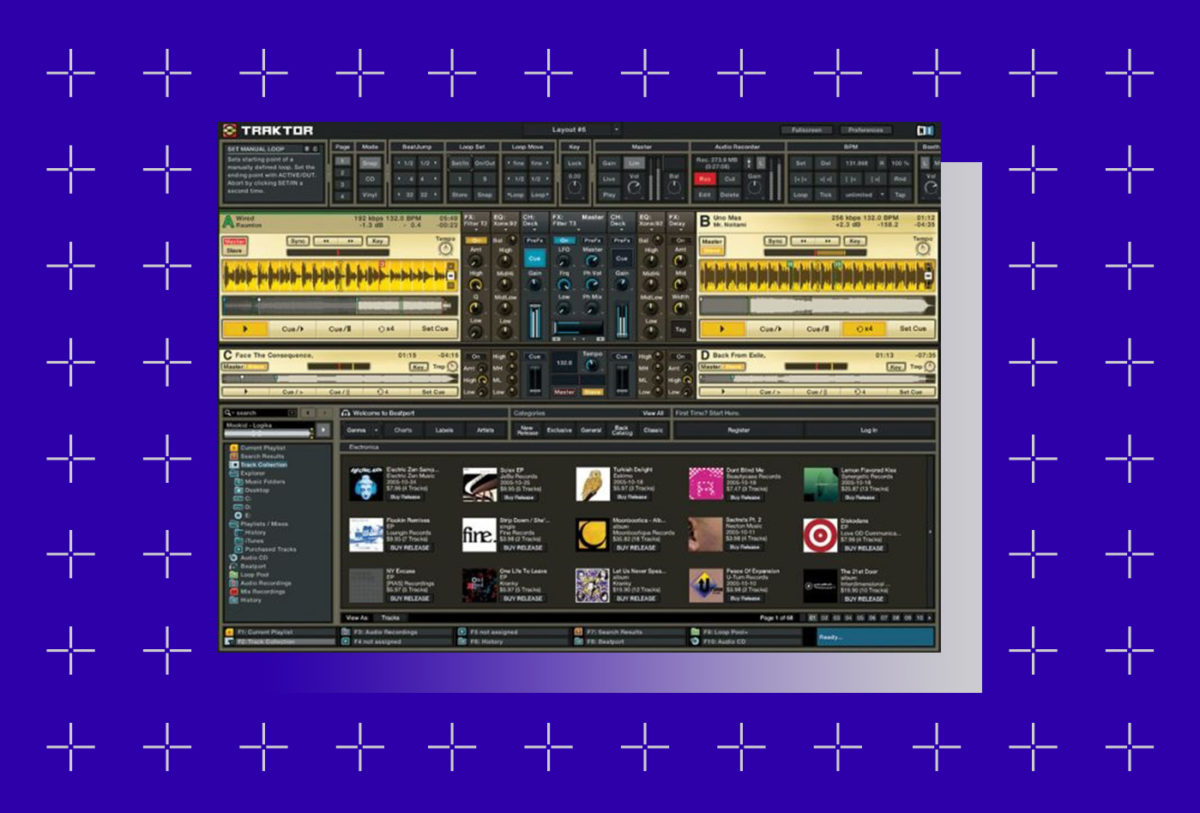
Looping
Most music is built on repetition, and especially modern music played in DJ sets. Whether it’s hip hop, disco, dubstep, techno or any other form of dance music, much of it is based on repeating patterns. In fact, the very origins of DJing as an artform start with an effort to isolate a choice loop from a record and repeat it. Think of Kool Herc juggling beat breaks to birth hip hop, or Ron Hardy splicing disco loops at the genesis of house music. While producers could already sample, edit, and rearrange tracks in their studio creations, DJs needed to arm themselves with some deliberate planning, double copies of a 12-inch, and serious dexterity to isolate several bars of a record into a danceable loop.
In early 2001, Red Sound released the Cycloops (later called the C-loops), a device which could detect a song’s BPM, sample a fixed-length loop of the audio, and play it back seamlessly in time with the original program. It offered a much simpler and more adaptable solution to on-the-fly looping., but it wasn’t perfect. The BPM detection wasn’t always reliable, routing it into a console could be challenging, and while it was relatively small and portable it still weighed as much as a laptop, or roughly 15-20 vinyl records. That’s where NI picked up the challenge.
TRAKTOR was not alone in accurately detecting the BPM of a piece of music, but Becker and his team at Native had an original insight about taking this capability further. “I think it was just a second thought,” he says. “We realised that by knowing the exact tempo down to one thousandth of a BPM, we were able to set an extremely accurate loop at any point in the song – even in the middle of a bar. And I think this was actually a much more groundbreaking invention than the Automatic Sync that came later; synchronizing two records was something that anybody could do. But playing a loop wasn’t.”
Suddenly, a massive creative opportunity opened up for DJs. They could isolate and grab a part of a track before it ended or changed; they could shorten it down to focus on a single moment; and most importantly, they could make these decisions in real time, improvising and responding creatively to the music and the dance floor. By taking direct inspiration from the origins of DJing and dance music culture, TRAKTOR has amplified the creative options available to DJs today.
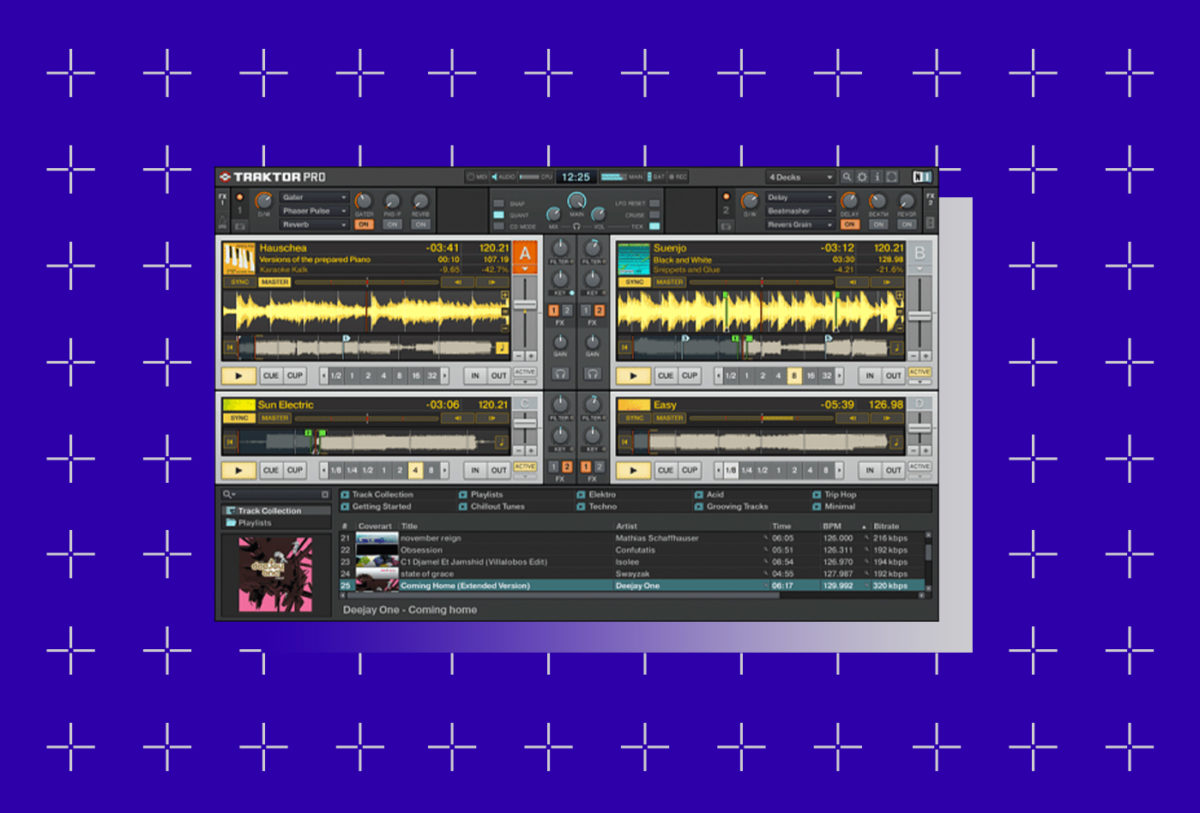
Hands-on performance
There’s no question that the DJing is a physical and tactile performance. From the very beginning, DJs like Larry Levan, the aforementioned Ron Hardy and Kool Herc – and countless others in Black and LGBTQ discos – took control of physical media and manipulated the music to activate dance floors. Today, in an age when technology has radically changed the tools available to us, the artform still aims for similar effects. So while TRAKTOR began as a purely software-based tool for playing digital files, its natural evolution was in the direction of physical control.
Like many other NI products, TRAKTOR sprang from the fundamental building blocks of REAKTOR. Becker and his team adapted existing REAKTOR tools for playback, beat detection, and the essential components of a mixing console like EQ and faders. REAKTOR also offered the tools for external MIDI control, something Becker had in mind from the very beginning.
“It felt wrong to us to send a DJ on stage with only the computer keyboard and the touchpad to control his set,” he explains. “Expressive DJing needs a lot of physical interaction. That’s why Traktor, from the very beginning, had one of the most powerful MIDI mapping integrations of the time – you could use it with more or less any existing MIDI controller.”
In 2003, TRAKTOR would expand those control capabilities by returning to the primary source of music control for DJs – turntables. The team enabled vinyl control of digital files by incorporating a then-radical technology developed in the Netherlands. Amsterdam-based N2IT had recently pioneered the digital vinyl control system (DVS). With the investment of Plus 8 label owners and DJs Richie Hawtin and John Acquaviva, N2IT partnered with Stanton in 2002 to release Final Scratch FS1. The partnership then joined with Native Instruments to release TRAKTOR Final Scratch, merging the innovations from both platforms. With this development, DJs could combine the familiar, intuitive control of a real turntable with the flexibility and depth offered by a custom-mapped MIDI controller.
With later versions of TRAKTOR, the possibilities continued to expand, with entire third-party websites and product lines dedicated to options for controlling the software. But Becker and his team had more ideas and a new goal – a dedicated TRAKTOR control device. “Because MIDI has a lot of compromises; you don’t have a very high resolution, so you have a hard time making a well-integrated experience,” says Becker. “That’s why we first started to make our own controllers – to provide a much tighter integration than would otherwise have been possible.”
As TRAKTOR’s basic playback functions were already working well with control vinyl, and mixing was taken care of via dedicated mixers, the team’s first hardware device was focussed on the more digital-specific functions of cue points, looping, and effects. An early version of this device, the KONTROL X1, was already in early development when Michael Koczynski, now the project’s Design Lead joined the NI team.
“There was a horizontally laid-out concept for the controller,” he recalls. “Friedemann introduced me to this cardboard mock-up, and since he was busy with the software, he gave me the opportunity to challenge it and show it to a couple of artists.”
After showing the device to some of TRAKTOR’s early adopters – including Richie Hawtin, Chris Liebing, and Alex Kidd – he became convinced that a vertical design was the most practical option for already-crowded DJ booths. From there, it was a question of how many controls could be included and which software features to prioritise.
“When I look back at the designs, I mean, it looks like they’ve been drawn in MS paint – all of the horrible concept sketches…” Koczynski remembers. “But people loved the finished product, right from the beginning. I think it was one of the top-selling TRAKTOR controllers ever. The price point helped, sure, but back then, there weren’t any alternatives around.
“It was the perfect controller for at home, for house parties, or for corporate events. But the professional DJs who were traveling a lot like how compact and also how sturdy it was – it didn’t really break. The majority of A-list DJs started using it, then their following, and those people’s following and so on.”
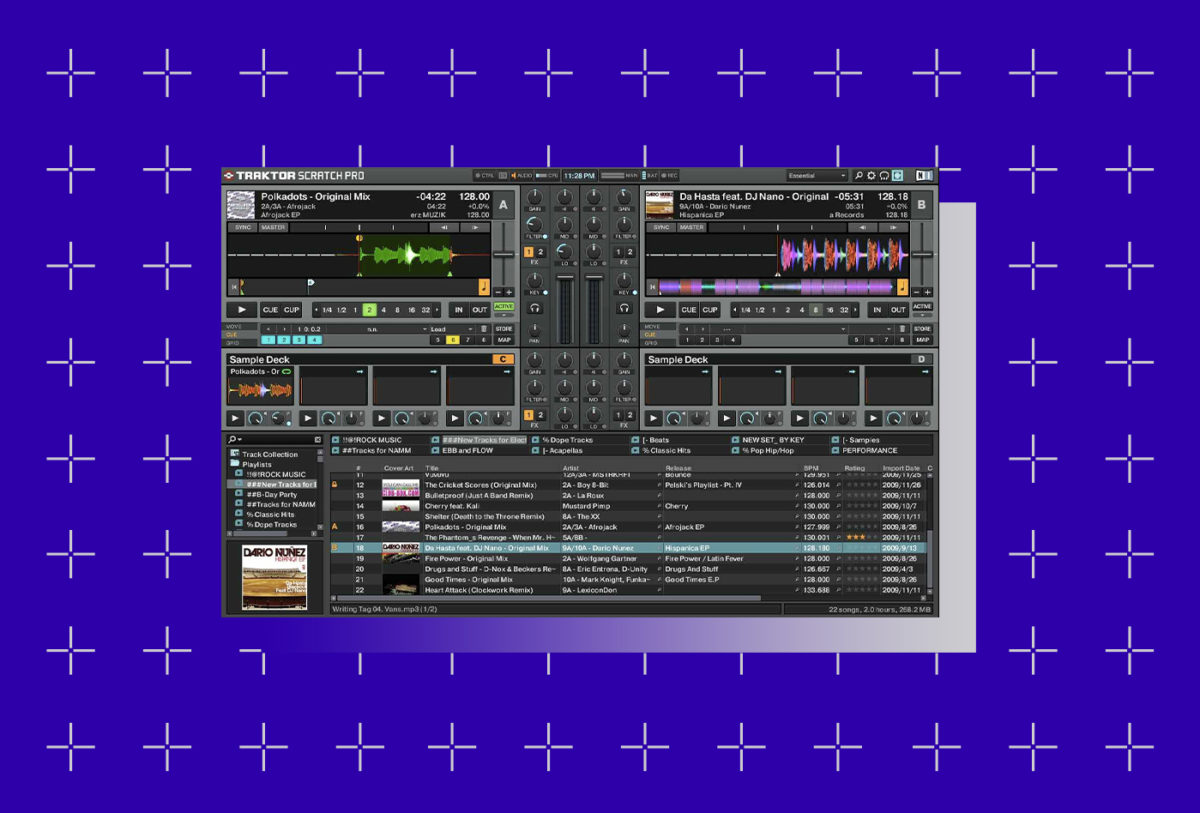
Staying in sync
Endless pages and pixels have been dedicated to this particular innovation. Some frown upon it, others creatively embrace it (and some do both!), but one cannot ignore that it has massively impacted the way that DJing is done. With all of the innovations and creative options mentioned above, comes the inevitable decision to sync or not to sync.
Techno DJ and producer Chris Liebing was one of the first to voice objections to the introduction of this new feature, telling us, “The first time that Friedemann and I came to some sort of disagreement was when he came up with this idea to sync decks automatically, meaning you would kind of mix the track in, but then you could hit a button, which would sync it automatically to the track which was running… and I mean, that was a really big thing. That was a really big step. And I wasn’t ready for that step.
“I was like, ‘You cannot do this, we cannot do this, nobody’s going to take this software seriously anymore,’” he recalls. “There are still some people who think that way. Yet, Friedemann, bless him, was able to convince me otherwise. I thought about it for a while and then I contacted him again and said, if we do this, we need to do four decks… because if you have four decks, the automatic syncing would be actually required in order to do other stuff as well. You could loop some stuff in the third deck, another sound in the fourth deck…”
The development of four-deck mixing in TRAKTOR was to drastically expand the possibilities of all of the innovations we’ve mentioned – from looping, controlling, and waveform mapping to effects syncing and more. And with that, a new step for Traktor was on deck.
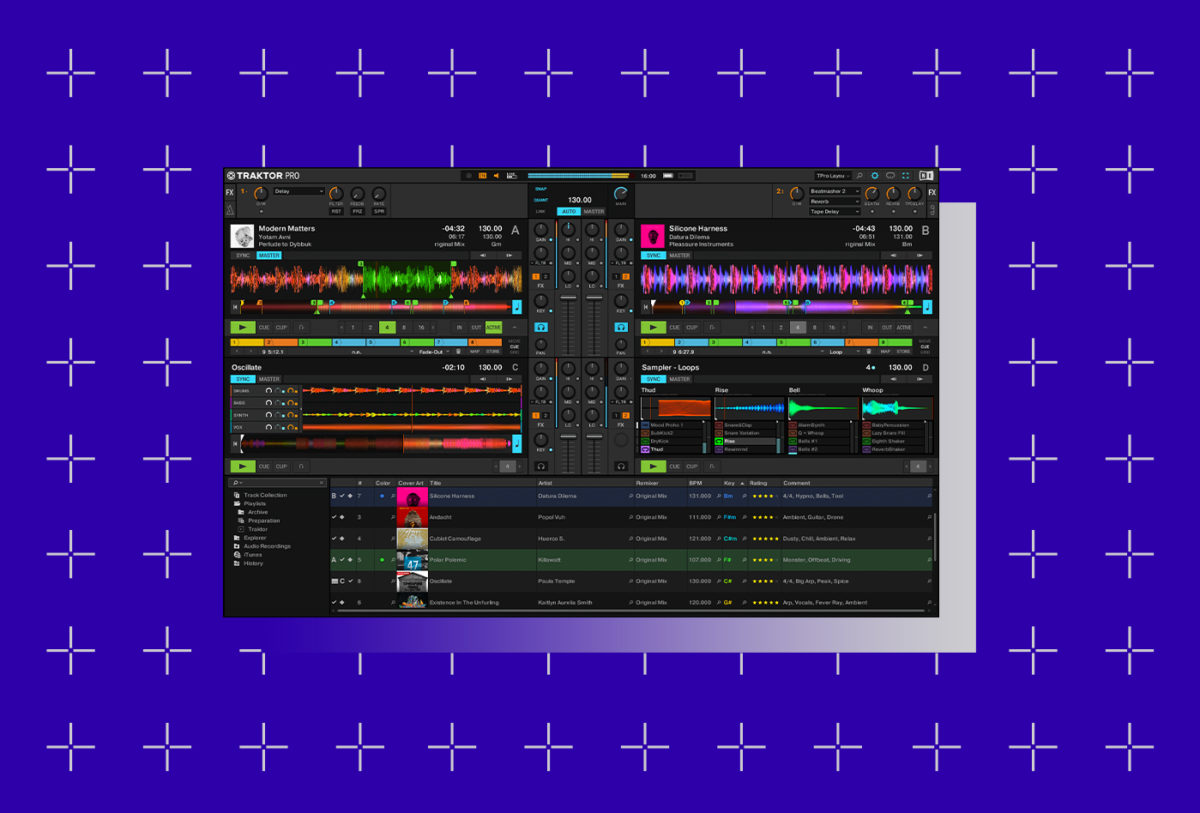
The democratization of DJing
Offering the world DJing software that could works on most any computer has, undoubtedly, made the artform available to a wider array of people than ever before. By the early 2000s, personal computers had reached many places where expensive turntables or vinyl records were not available. And more importantly, many people who could not afford the expensive early investment in gear and music were offered an entry point to DJing by way of digital files and software like TRAKTOR.
“There are so many countries I know of where even you wouldn’t dare to throw a party or even buy DJ gear,” says Becker. “People are playing underground parties on laptops for example, and this has always been the domain of Traktor – and also for young people who want to understand what DJing is all about.”
“Suddenly it wasn’t just a handful of record stores around the world filtering the best limited vinyl pressings to the elite DJ’s” – Richie Hawtin
Richie Hawtin is also keenly aware of the democratizing effect of tools like TRAKTOR. “Digital playback systems have been a key part of the growth in the global electronic music scene since the early 2000’s,” he says. “The ability to actually play digital files in your DJ sets sped up the adoption of online digital music download services, which changed the balance of power of music distribution. Suddenly it wasn’t just a handful of record stores around the world filtering the best limited vinyl pressings to the elite DJ’s, but music download platforms that gave anyone online the fair chance to also buy and play those tracks. Digital music and performance tool adoption was the foundation of our scene’s rapid growth over the past twenty years.”
This aspect is inarguable – thanks to TRAKTOR, far more people have been able to experience and engage with DJing than ever before. It’s not necessary for everyone to reach the peaks of success that Hawtin and Liebing have enojoyed, or even to ever step on stage, but many, many voices in the music world have been elevated by steps built in TRAKTOR.
The making of TRAKTOR has also involved no small number of contributors, Becker says. “Traktor is a joint effort and the joint merit of so many different people. I’m deeply impressed and thankful when I think back these 20 years of how many people have worked on Traktor, given their passion to this product, and dedicated their lives – either as makers or as DJs – to it, bringing so many different angles and skills.”
With many of the hotly-contested boundaries of DJ techniques, and the sometimes blurry lines of genre, performance, art and technology, there will always be a tension between tradition and progress. For Traktor, over the 20 years since its original formation, the focus has always been on the side of progress.
Click here to download TWENTY FIVE for FREE, and be sure to check out the 25th Anniversary Collection – an ultra-exclusive range of KOMPLETE. MASCHINE, and TRAKTOR hardware in your choice of Ultraviolet or Vapour Gray.








